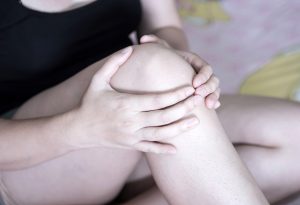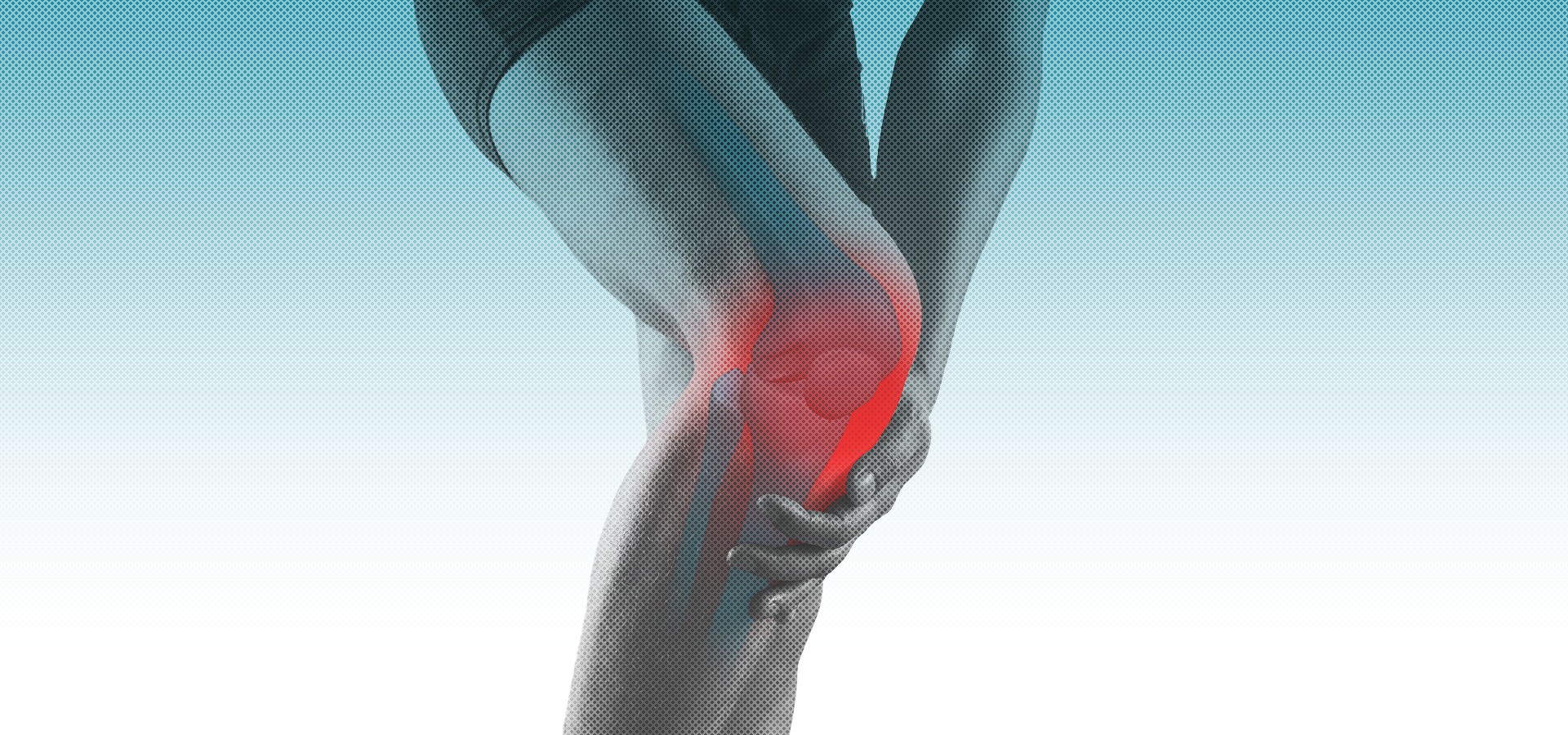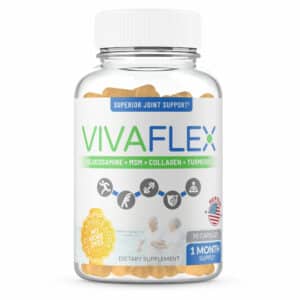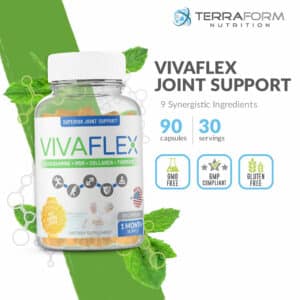If you suffer from knee pain you know how frustrating it can be. Whether it’s a pinch, a dull ache, or an intense pain, stiffness of the knee can be debilitating and can greatly impact your quality of life. Knee pain can be caused by arthritis, inflammation, muscle or ligament tears or strains, and many other reasons. Joint pain is most commonly caused by inflammation. When a joint, especially the knee, becomes inflamed or irritated the nerves become a lot more sensitive to movement. Inflammation can feel like a burning sensation, an ache, stiffness, swelling, or pinching. Luckily for you there are simple and effective ways to help relieve these common symptoms.
Knee pain affects people of all ages. About 25% of adults suffer from knee pain. In addition, women are more likely to experience this. It is likely that over the course of your lifetime you will experience pain in one, or both, of your knees. So how can you help? These six simple tricks can help relieve your pain and get you back to your old self. Stop relying on pain medication, like NSAIDS, and start feeling better today!
What Causes Knee Pain?
Although commonly caused by inflammation, knee pain has several other culprits. Here are a few:

Age: After the age of 40 you start to lose collagen. Collagen is what helps build cartilage. Cartilage is the substance in your joints that helps them move smoothly and freely. In fact, by the time you reach the age of 60 more than half of your body’s collagen is gone. This makes aches and pains a lot more likely. Doctors call this depletion of cartilage and collagen arthritis.
Repetitive Movements: If you were a dancer, an athlete, or an avid runner you may be experiencing knee pain due to repetitive movements. Sometimes our collagen can break down due to overuse. This breakdown of cartilage brings on inflammation, which in turn leads to knee pain. Sometimes people who were gymnasts or cyclists don’t realize how much pressure and stress they are putting on their bodies. This repeated exposure to stress and pressure can cause long-term discomfort.
Injuries: Another common reason for knee pain is due to impact or trauma. A tear or strain in a surrounding muscle can cause unnecessary pain. Sometimes these injuries can lead to lifelong pain.
General inflammation: When we talk about joint inflammation we are focusing on the irritation of a muscle, ligament, tendon, or other supports surrounding the knee. Inflammation can be linked to stress, smoking cigarettes, dehydration, lack of collagen, trauma, autoimmune disorders, and various other factors.
What Can I Do To Feel Better?
-
Exercise
You may be thinking that exercising is the exact opposite of what you want to do if you suffer from knee pain. If you are experiencing discomfort you know that extra stress and strain on your joints can make things feel worse. However, studies have shown that low-impact exercise can actually improve your knee pain! According to arthritis.org “research shows that even relatively minor increases in the strength of the quadriceps – the muscles that run along the front of the thigh – can help reduce the risk of knee osteoarthritis and its progression, and reduce pain.” Some great exercises to fit into your workout can be swimming, or water aerobics, the use of a resistance band, dancing, walking, cycling, martial arts, yoga, and more.
Inactivity can actually cause your knee pain to get worse. This is why it’s important to find any kind of low-impact activity to work in to your daily schedule. If needed, wear a brace or a wrap around your knee to get started. Be sure to find an activity that you enjoy and that isn’t too strenuous. For those of you who are sitting a majority of your day, there are some quick and easy exercises to help get some additional movements in. You can do seated leg-extensions. Start by sitting with both feet on the ground, about shoulder width apart, and your spine in a neutral position. Slowly extend one leg out in front of you. Hold for 3 seconds and then lower. Repeat on both sides. You can also get increased activity in to your day by taking the stairs instead of the elevator. In addition, you can grab a parking spot at the back of the lot instead of the front. Adding in some extra steps and movements will help with the mobility of your knee and will help ease the pain you are currently experiencing.
-
Change Your Diet
As previously stated, knee pain is typically linked to inflammation. Our diet, and eating habits, can greatly impact this. If you think your knee pain is a result of inflammation there are several quick and easy changes that can be made to your diet to reduce inflammation and pain! Gluten and dairy are two of the most well-known inflammatory foods. Removing these two items from your diet will make a noticeable change in the way you feel. It’s easier than you think to cut back on dairy and gluten. Most grocery stores offer a wide variety of other options for those of us steering clear. In addition, some other things you may want to avoid or limit from your diet are artificial sweeteners, overly-processed foods, and hydrogenated oil (found in most fried foods, fast food, and packaged snacks).
Eliminating inflammatory foods is a start. However, you can also add in anti-inflammatory items as well. There are several foods that are known to fight, or reverse, inflammation in the body. Organic fruits, vegetables, and many spices can actually help to reverse the symptoms of inflammation such as knee pain. Add garlic, green tea, ginger, rosemary, and basil to your grocery list and start cooking! These spices and herbs may be available in supplement or capsule form as well.
-
Take Vitamin D & Vitamin K
Osteoarthritis can be a result of deficient, or low, vitamin D levels. To reduce stiffness and pain in the knees be sure to add this supplement to your daily regimen. Vitamin K is what helps calcium and vitamin D absorb into your bloodstream so be sure to take that too. Vitamin D is known to help keep your bones strong and healthy. You probably know that the sun and fish are sources of vitamin D. However, it can be challenging to get the optimal level just from those 2 sources. Many people need to supplement, especially during months when it tends to be cloudy and gray, in order to reach the correct amount. So unless you are eating fish multiple times a week you probably need to increase your vitamin D levels.
-
Change Where You Sit
Knee pain can be intensified based on your choice in seating as well as your posture. Try to avoid chairs or couches that make you “sink” down. This is because your knees will be at an angle that can cause inflammation after an extended period of time. It also puts more pressure on the knees when you stand up. We aren’t suggesting you go out and buy new furniture though. An easy fix to this problem is to sit on a pillow. This will help to elevate you and help to avoid these problems.
In addition to monitoring where you sit you can also be mindful of your posture. After just several minutes of sitting most people are likely to slouch or lean. These behaviors can also lead to inflammation. Be sure you are sitting up straight and your spinal cord is neutral. It has been said that for every 20 minutes you are sitting you should move around for at least 2. So if possible, after remaining seated for 20 minutes take a few minutes to stand up and move around.
-
Wear Appropriate Footwear
We all know that we have that one pair of shoes in our closet that really hurt our feet. But did you know that your shoes can affect your knees as well? Supportive and comfortable shoes can help to take the pressure off of the knee joint by promoting proper alignment and balance. Wearing high heels has been widely known to be a common cause of knee pain. You may not be wearing high heels, but it is possible that your footwear is not conducive for your knee joints. So trade out those old sneakers for a new pair, especially during exercise.
-
Take an Epsom Salt Bath
One of the best things after a long day is to take a bath. Now you can help ease your knee pain by adding Epsom salts. Epsom salts are high in magnesium and sulfates which can help to lower inflammation, relax muscles, and reduce muscle spasms. The important minerals in these salts are absorbed right through your skin so adding them to your bath, or even a compress applied to the knee, can lead to effective results.
Epsom salts can be found at your local grocery store, health food store, or pharmacy. Just add 2 cups to your bath water and enjoy. You can also soak a towel in Epsom salt water and apply to the pained area for several minutes.
-
Bonus Tip: Try a Joint Supplement
Nowadays it can be tough to even follow the 6 suggestions above in today’s busy world. But there are a couple of good, all natural supplements out there that can be great to help relieve your pain quickly and help rebuild some of the lost movement that may have come along with the pain. Take a look at some of our most effective, bestsellers below:
VivaFlex Superior Joint Pain Relief Supplement- 90 Capsules
$29.99 — or $28.49 / monthTurmeric Curcumin 1300mg per Serving – With BioPerine – 30 Servings
$16.97 — or $16.12 / monthYou may think you are bound to live with knee pain or rely on medication to help manage your pain forever. But you now know that there are several easy and quick remedies to help with your discomfort. By changing your diet and adding in some light exercise you are likely to shed a few pounds. Weight management is also a factor in knee pain. With these simple steps you can be back to living a healthy, active, and pain free life!









